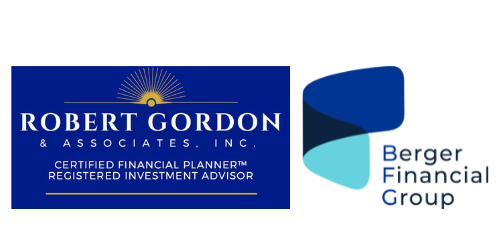20 Financial Resolutions for 2020
Submitted by Robert Gordon & Associates, Inc on January 10th, 2020
Have you made any resolutions for New Year’s? One of the most common topics for resolutions is money.
If you need some ideas, here are twenty to consider for 2020:
1) Track your spending. People are often shocked when they see where their money is actually going. Start by looking at your bank and credit card statements for at least 3 months and record your expenses on a worksheet or in a budgeting aggregator. To track cash, write down expenses, keep receipts, or only use cash for specific types of expenses like eating out.
2) Make a spending plan. If you're spending more than you have coming in or aren't saving enough to reach your goals, look at your expenses to see where you can reduce spending. Like a diet, a budget is only as good as how well you stick to it. Consider using a cash management site like Mint to monitor your spending online for free. If you don't want to track every nickel and dime, you can also give yourself a fixed weekly or monthly allowance for discretionary expenses like shopping, eating out, and entertainment.
3) Check your insurance coverage. Make sure you not only have auto and homeowners or renters insurance, but also consider umbrella liability insurance, especially if your assets exceed the liability coverage provided by your other property and casualty policies. See what coverage you get for disability and life insurance from work and Social Security and purchase supplemental coverage if you need more.
4) Update your estate planning documents. Draft an advance health care directive and a durable power of attorney to make health and financial decisions respectively if you're incapacitated. In addition to who inherits your assets, you'll also want a will to designate who could become the guardian of your minor children. Check to see that beneficiaries on your retirement accounts and life insurance policies are up-to-date and see if your state allows you to add beneficiaries to your bank and investment accounts and even your home and car to avoid the time and cost of probate on those assets for your heirs. You might also want to hire an estate planning attorney to at least review and update any documents you do yourself or to draft a trust if you still have a lot of assets that will pass through probate.
5) Build up an emergency fund. Ideally, you'll want enough in cash (and maybe even food) reserves to cover necessary living expenses for at least 3-6 months. Keep in mind that this should be someplace safe and accessible, like a savings account at the bank, and not invested in anything risky.
6) Max the match in your employer's retirement plan. If you're fortunate enough to have an employer that matches your contributions, try to contribute at least enough to get that full match. Otherwise, you're leaving part of your compensation on the table.
7) Pay down high interest debt. If you have debt with interest rates over 4-6%, you may save more by paying down the debt than you'll earn by investing that money. Start by seeing if you can refinance or negotiate down your interest rates. Then make additional payments towards the balance with the highest interest rate and as one debt is paid off, put those payments towards the remaining debt with the next highest interest rate.
8) Protect your credit. Set up your bills on autopay to avoid missed payments. Be sure to check each of your 3 credit reports for free every 12 months on AnnualCreditReport.com and dispute any errors you may find. Your bank or other financial institutions may offer identity theft protection and credit monitoring.
9) Buy a home you can afford. Home ownership allows you to be the king or queen of your own castle while providing the financial benefits of being able to deduct some of your housing costs, build equity, and own an asset that generally appreciates over the long term. As we learned during the real estate bubble and financial crisis, the key is not buying more home than you can comfortably afford. Working with a CFP® Professional can confirm that you are not entering into a financial trap.
10) Run a retirement estimator. You'll want to calculate how much you need to save to reach your retirement goals. This will let you know whether you're on track to hit your retirement goals and if not, what you can do to reach them. As with any calculator, it's garbage in, garbage out. Some good assumptions to use are a 3% inflation rate, a life expectancy of 90 or higher, and average annualized investment returns of 4-6%, depending on how aggressively you invest.
11) Contribute to a Roth IRA. If you're eligible, you have until April 15th, 2020 to contribute for 2019 and you can contribute for 2020 starting on January 1st as well. The earlier you contribute the better since the money can grow and eventually be withdrawn tax free after age 59 1/2 as long as you've had the account open for at least 5 years. Having tax-free money in retirement is particularly useful if you retire before becoming eligible for Medicare at 65 since health insurance subsidies under the Affordable Care Act are based on taxable income.
While you may be able to access the sum of your contributions tax and penalty free, a ROTH should not be invested as if it was an emergency fund. Your emergency fund should be separate and distinct. If you withdraw any earnings before age 59 1/2 and 5 years, they may be subject to taxes and a 10% penalty, but the contributions always come out first.
12) Contribute more to an HSA. If you're eligible to contribute to an HSA (health savings account) for health care expenses, it can be a valuable retirement account as well. That's because the contributions are pre-tax and can be invested and withdrawn penalty free at age 65 for any purpose. In addition, the money would also be tax free if used for qualified medical expenses at any age, including premiums for some long-term care insurance and Medicare premiums (but not Medigap). This is the only account that has the triple tax benefits of pre-tax contributions, tax-deferred growth, and tax-free withdrawals.
13) Contribute more to your employer's retirement plan. These contributions are conveniently deducted from your paycheck and have the tax benefits of tax-deferred (pre-tax) or tax-free (Roth) growth. If you can't afford to contribute enough now, see if your plan offers the option of "auto-escalation" or a "contribution rate escalator" that can automatically increase your contributions gradually over time.
14) Contribute to a non-retirement investment account. If you've maxed out your individual and employer retirement contributions, you can start contributions to a non-retirement investment account. While these accounts don't offer immediate or deferred tax savings, they also don't come with the restrictions that retirement accounts come with. This is a great place to invest money which is intended to help with financial goals that are expected to occur before retirement.
15) Consider consolidating retirement accounts. If you have retirement plans from previous jobs still with your old employer(s), you might want to roll them into your current plan or an IRA. At the very least, it would be easier to manage fewer accounts and you might have a better selection of investment options.
However, there are a few reasons why you might not. One is if you want to invest in something that's only available in your old plan. The second is if you have employer stock since you can pay a lower tax on the gain by transferring the shares directly from the account rather than rolling them over. Finally, if you're under age 59 1/2 and the old plan is a 457 or if it's a 401(k) or 403(b) and you left the job after age 55, you would not be subject to penalties on withdrawals from the old plan, but might be if you rolled it over to an IRA.
16) Save for education expenses. Make sure that your retirement is on track first because there's no financial aid for that. You can start by estimating how much you would need to contribute to your child's education expenses so you can calculate how much to save. Coverdell education savings accounts and 529 college savings plans allow tax-free earnings for education.
17) Make sure your investments are properly diversified. The biggest factor in determining the risk and return of your investment portfolio is your asset allocation or how your money is divided between basic asset classes like stocks, bonds, and cash. A simple way to a diversified portfolio is to invest in a pre-mixed asset allocation fund. Some are based on a fixed level of risk while others automatically reduce the risk level over time as you approach your target date for goals like retirement or education.
18) Minimize your investment costs. Studies have found that low fees are actually a better predictor of future mutual fund performance than past performance or even Morningstar ratings. To minimize mutual fund fees along with taxes and other trading costs, consider implementing your asset allocation plan with low cost index funds that simply track the market and generally end up outperforming more expensive actively managed funds. You can further minimize taxes on your investment income by keeping tax-inefficient investments like taxable bonds, REITs, commodities, and high turnover funds in your tax-sheltered accounts as much as possible.
19) Harvest tax losses. Although 2019 was another good year in the stock market, you may have some investments in taxable accounts that have lost value. By selling them at a loss, you can use the losses to offset some other taxes. Just don't repurchase the same investment within 30 days or you won't be able to deduct the loss.
20) Treat yourself and those you love. Finally, don't forget that the ultimate purpose of money is to provide for the needs of you and your family. How you do it is important though. Once your needs are taken care of, meet some of those wants with a vacation or occasional outings that let you spend more time together. Studies show that spending money on experiences creates more and longer lasting happiness than spending on material purchases.

